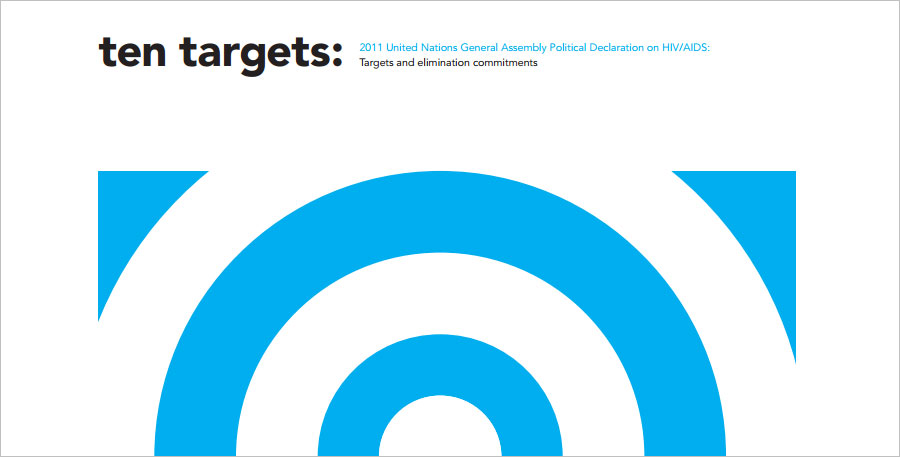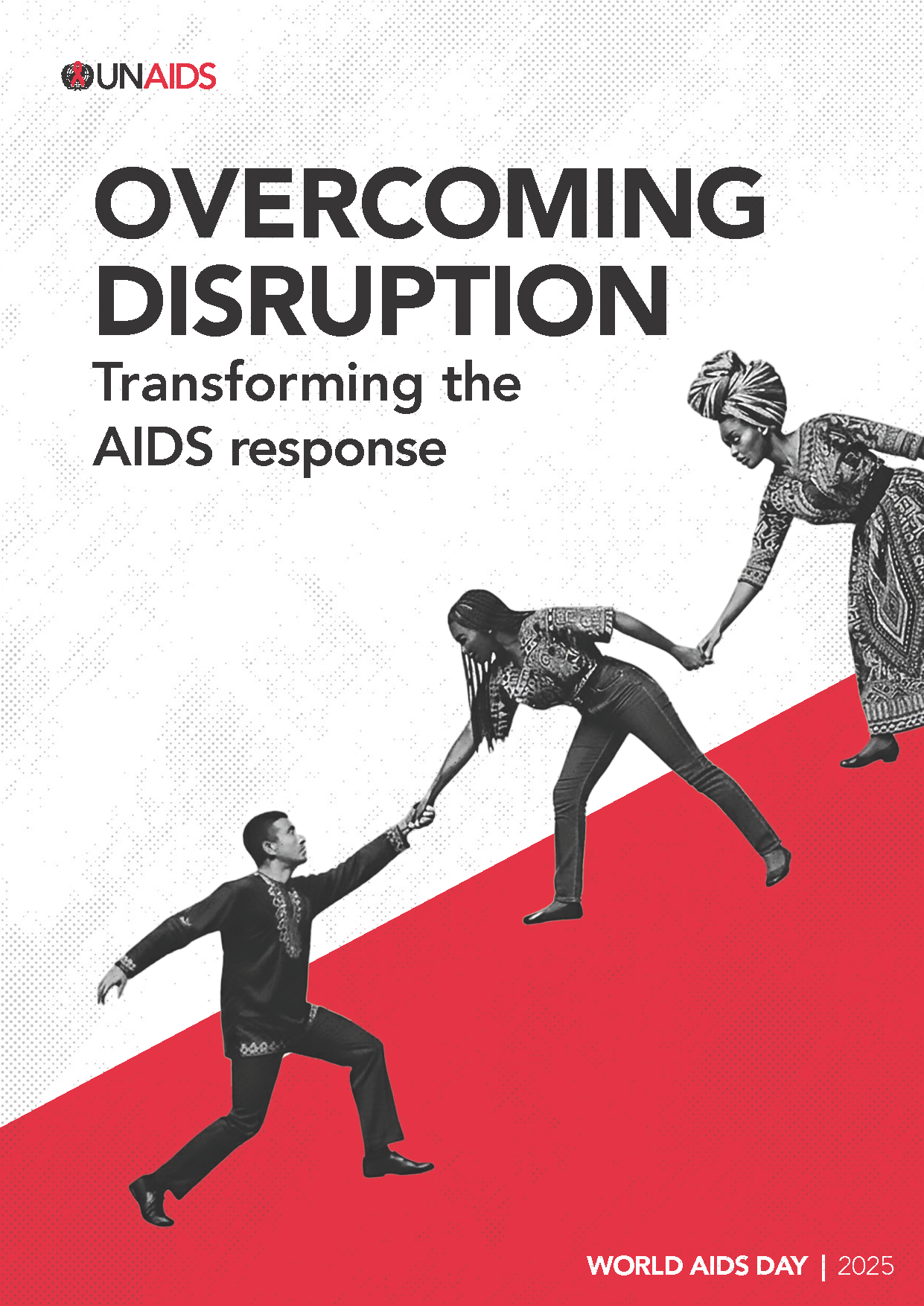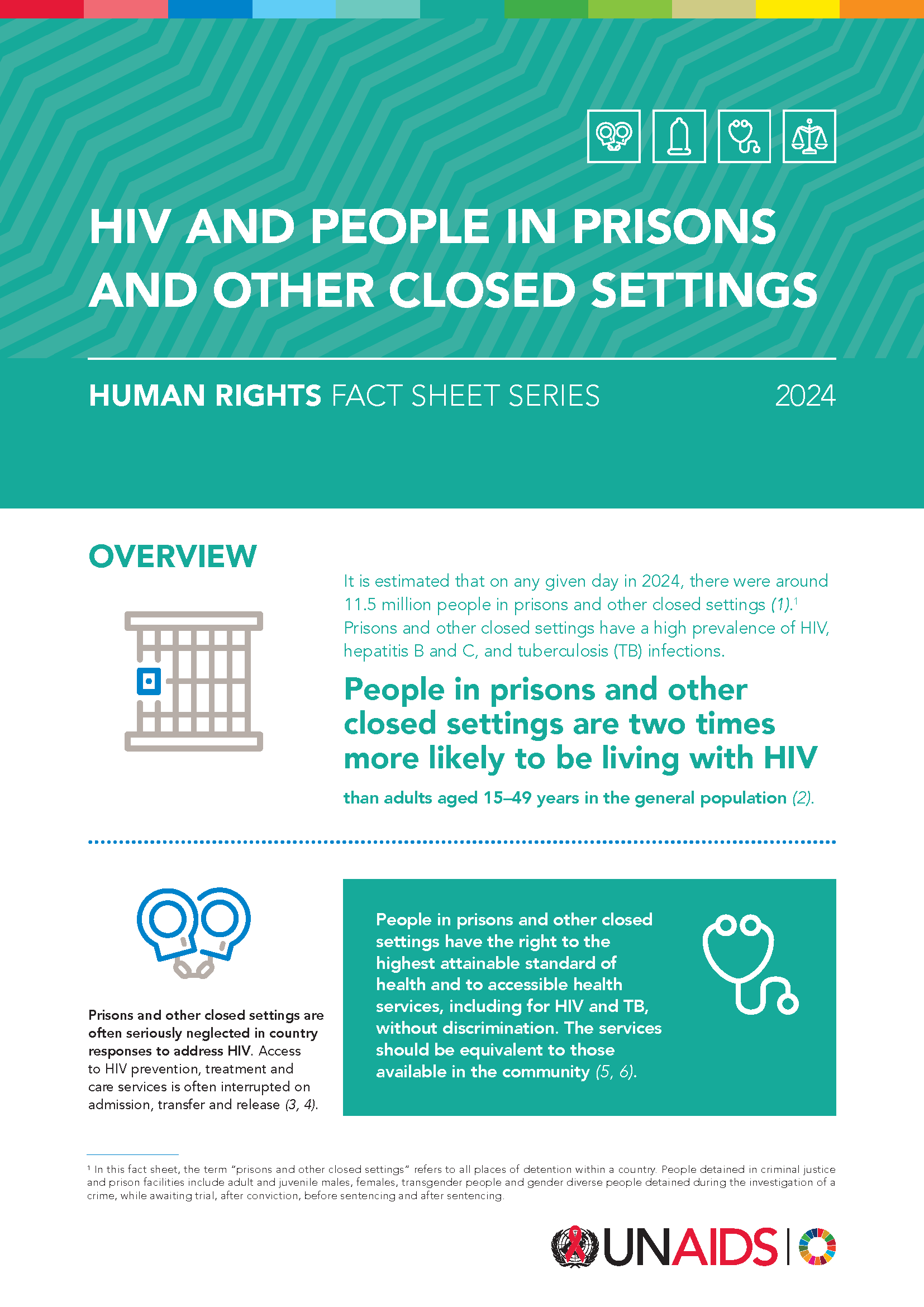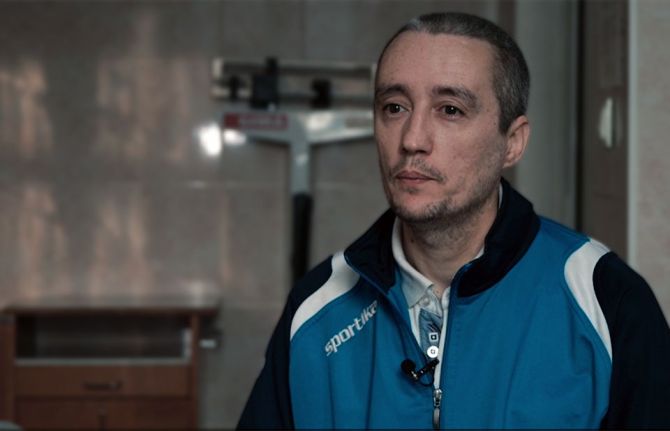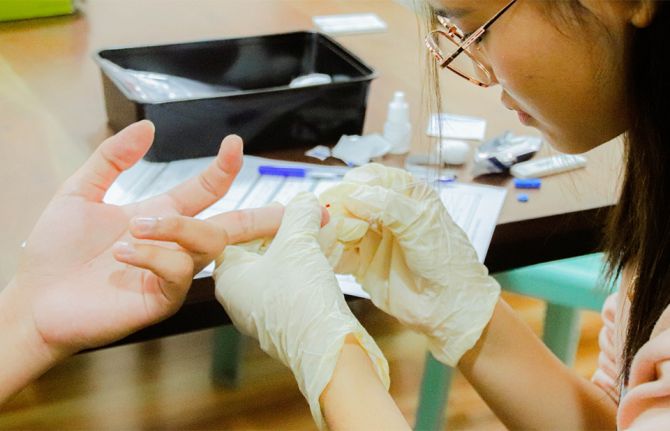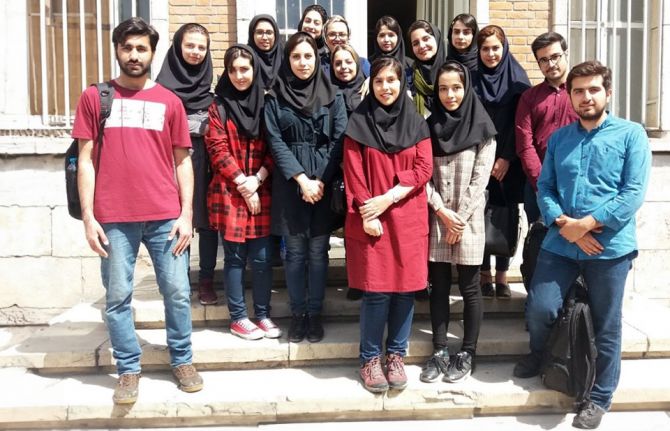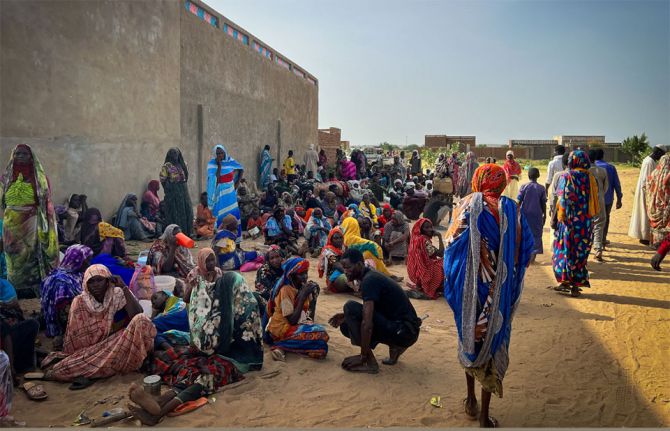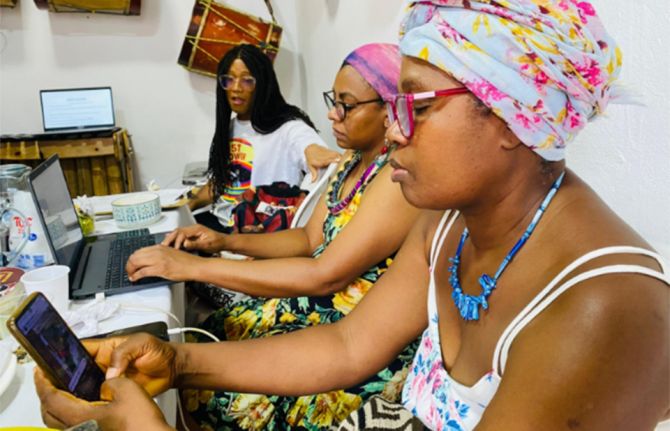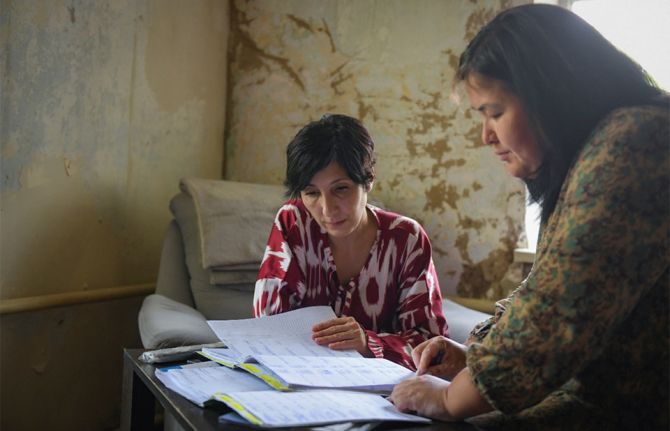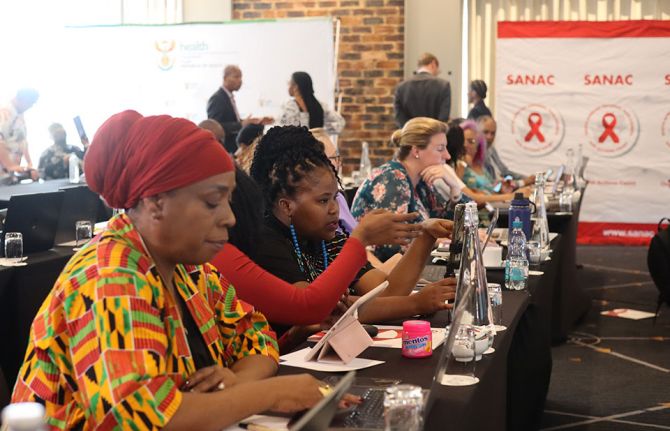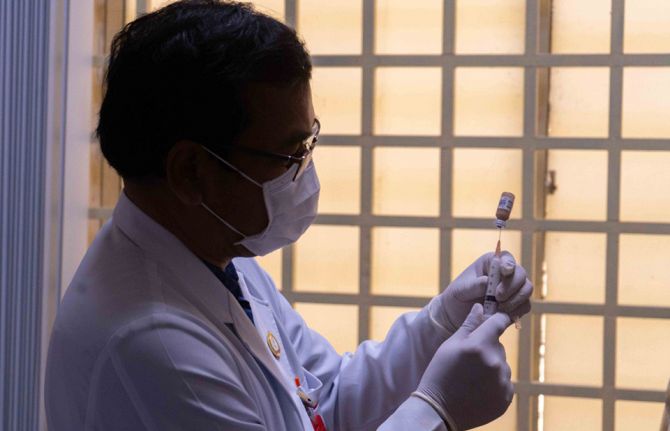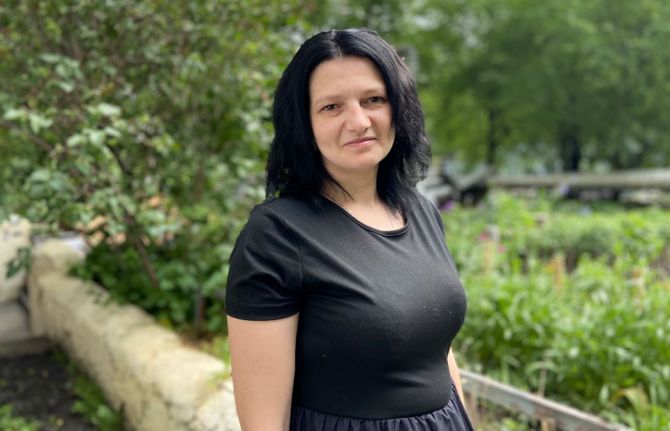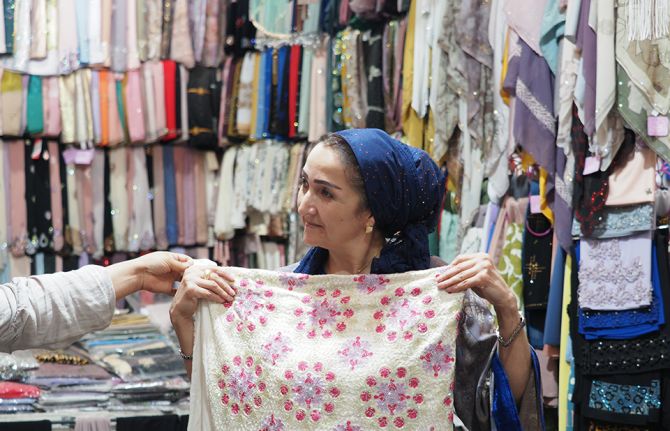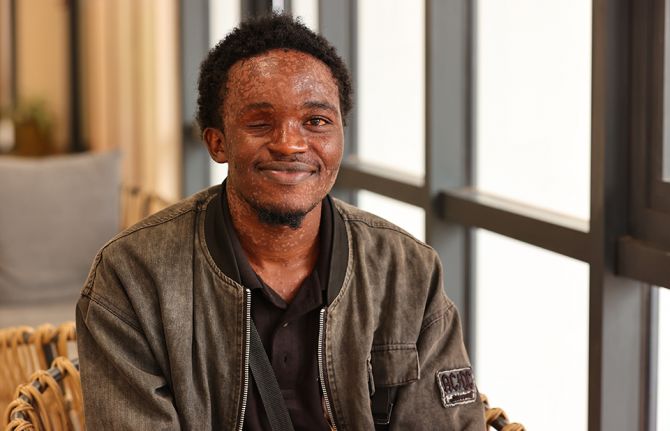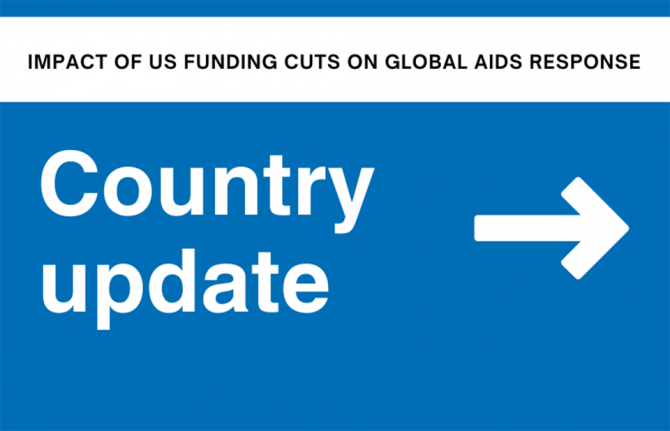
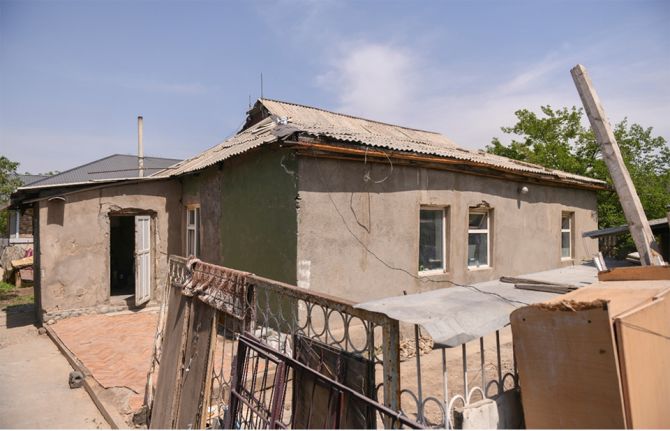
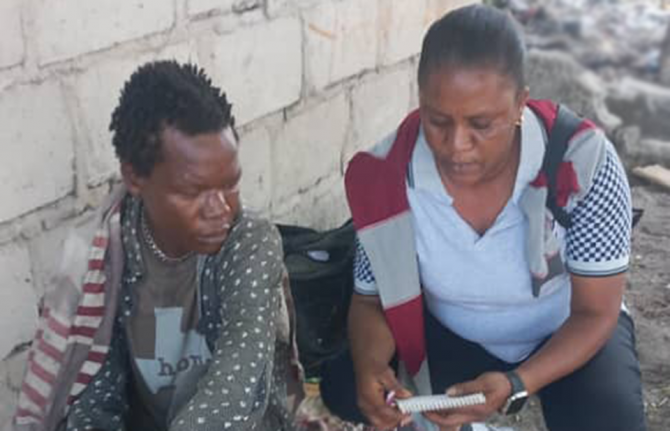
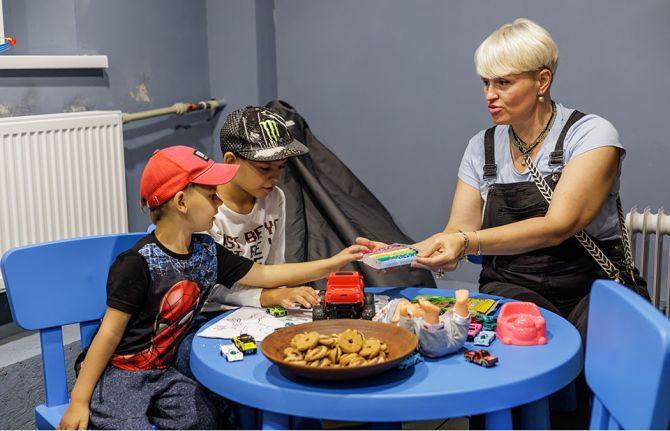

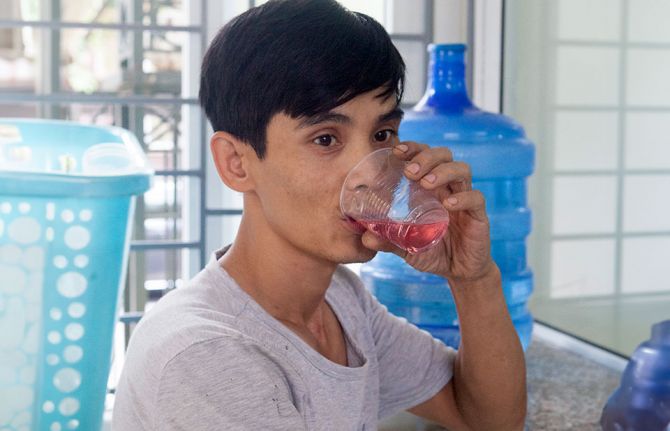

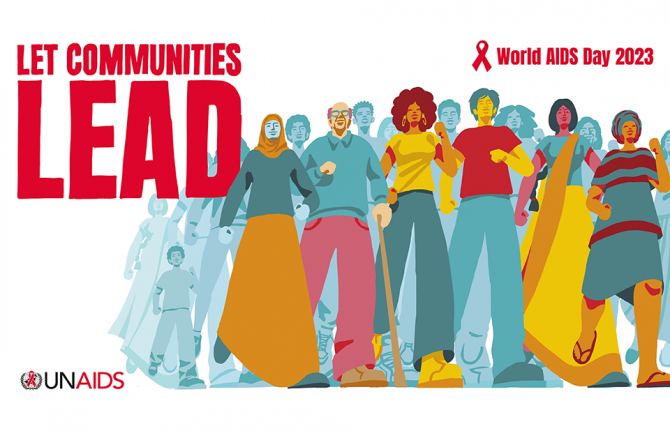
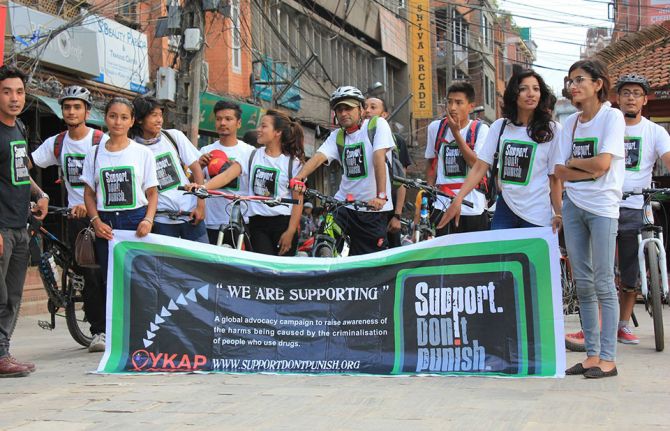
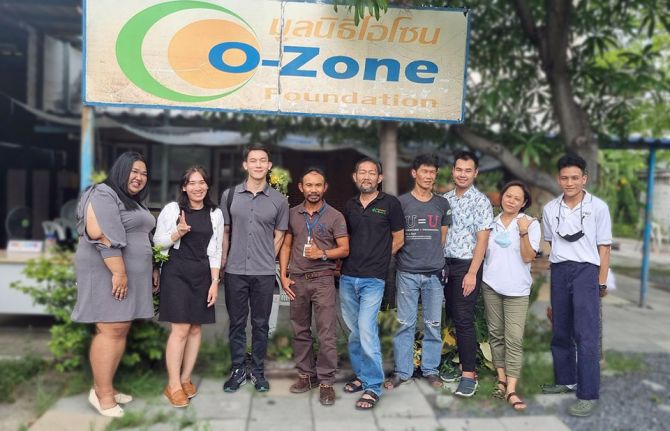
Preventing HIV in people who inject drugs

Feature Story
HIV high on the agenda at the fifty-sixth session of the Commission on Narcotic Drugs
12 March 2013
12 March 2013 12 March 2013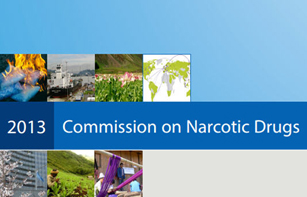
In wide-ranging opening remarks to the current session of the Commission on Narcotic Drugs in Vienna, the Executive Director of the UN Office on Drugs and Crime (UNODC) Yury Fedotov placed HIV and drug use at the heart of the global agenda.
“HIV transmission through injecting drug use continues to be one of the main unresolved challenges of the international community. Widespread stigma, discrimination and lack of access to evidence-informed HIV services are among the key challenges,” he said.
Addressing the gathering of more than 1 000 representatives of Member States and civil society, he suggested that despite “notable progress” in increasing access to HIV services for people who inject drugs, there is still a long way to go.
In an apparent nod to the post-2015 development agenda Mr Fedotov put the challenge of the epidemic within the context of a health and rights-based prism: “[H]uman rights and public health considerations must be at the core of the international response to drug use and HIV,” he maintained.
HIV transmission through injecting drug use continues to be one of the main unresolved challenges of the international community. Widespread stigma, discrimination and lack of access to evidence-informed HIV services are among the key challenges.
Executive Director of the UN Office on Drugs and Crime, Yury Fedotov
The global challenge to this pressing issue has been gaining momentum. Through the June 2011 United Nations General Assembly Political Declaration on HIV and AIDS, the world is committed to halving the number of drug users who acquire HIV by 2015.
According to UNAIDS, harm reduction strategies are key to prevent new HIV infections among people who use drugs. A comprehensive, evidence-informed package requires: needle and syringe programmes, opioid substitution therapy, HIV testing and counselling, antiretroviral therapy and condom programmes for people who use drugs and their sexual partners. It also entails prevention and treatment of sexually transmitted infections, tuberculosis and hepatitis as well as information, education and communication materials intended specifically for people who use drugs.
This stigmatized population bears a very heavy burden of the virus, which is often transmitted through the use of unsterilized needles. UNAIDS’ global report 2012 contains some sobering statistics. In 49 countries HIV prevalence among people who inject drugs is at least 22 times higher than among the population as a whole and in 11 countries their level of infection is more than 50 times higher.
A very large number of individuals are affected. According to the 2012 UNODC World Drug Report, an estimated 15 to 16 million people, in 151 countries, inject drugs. A 2008 global study showed that 3 million were living with HIV. In several countries—notably in Eastern Europe and Central Asia, one of two regions where the number of new infections is increasing—the AIDS epidemic is being driven by unsafe injecting drug use.
People who use drugs are much less likely to be reached by HIV-related services, such as testing. HIV-positive women who use drugs do not access programmes to prevent their children being born with the virus as often as other women. Surveys in capital cities reveal that drug users also report lower condom use than men who have sex with men or sex workers.
At the fifty-sixth session of the Commission on Narcotic, which is running from 11-15 March, drug use and HIV will be addressed through a number of channels, including a draft resolution calling for the intensification of efforts to reduce HIV to attain the targets of the 2011 Political Declaration on HIV and AIDS.
On Tuesday a side-event will explore the opportunities and challenges facing women who use drugs and how to make care and support services more gender-responsive. The meeting will be chaired by UNODC Director, Division for Operations and Global Coordinator for HIV/AIDS, Aldo Lale-Demoz. Michel Kazatchkine, the United Nations Secretary-General’s Special Envoy for AIDS in Eastern Europe and Central Asia, is scheduled to attend the event as a special guest.
The Commission on Narcotic Drugs is the United Nations central policy-making body mandated to deal with a broad range of drug-related issues.
External links
External links

Feature Story
Alternative action on compulsory detention: Innovative responses in Asia
05 October 2012
05 October 2012 05 October 2012
People who use drugs in a 05 centre in Tien Lang district, Hai Phong City, Viet Nam.
Credit: UNAIDS
The life of a female sex worker in Viet Nam is filled with fear—fear of HIV, fear of violence, fear of stigma, and most of all, fear of the law enforcement services. A study conducted by the government of Viet Nam in 2012 on sex work and migration found that 50% of female sex workers report being afraid of the police. Up until a few months ago, arrest could lead to years of confinement in an administrative detention centre known as the ‘05’.
However, very recently, the National Assembly of Viet Nam passed a new Law on the Handling of Administrative Sanctions which effectively ends the practice of detaining sex workers in ‘05’ centres. The Law also allows drug users who are subject to compulsory treatment in drug detoxification centres to have court hearings on their cases and legal representation at the court.
“I found it like a dream coming true when I heard the news,” said Khanh, a leader of the Peaceful Place self-help group for female sex workers in Ha Noi, Viet Nam. “I used to use drugs and sell sex. I spent six terms in detention centres. I know how hard it is to stay in there and I know [detention] centres do not help you to stay away from drugs or stop selling sex.”
Khanh was one of the community representatives who were able to share their life experiences and their needs with members of the drafting committee of the new law in early 2011 during a community consultation workshop organized with support from UNAIDS.
During the development of the law, government officials and National Assembly members also sought concerted policy advocacy and technical assistance by United Nations agencies—including UNAIDS, UNDP, UNICEF, UNODC, WHO and UNFPA under the framework of the One UN Initiative in Viet Nam.
I used to use drugs and sell sex. I spent six terms in detention centres. I know how hard it is to stay in there and I know [detention] centres do not help you to stay away from drugs or stop selling sex
Khanh, leader of the Peaceful Place self-help group for female sex workers in Ha Noi, Viet Nam
“I highly appreciate the United Nations’ concerted support to the Ministry of Justice for the development of the Law on the Handling of Administrative Sanctions,” said Vice Minister of Justice Nguyen The Lien, Vice Chairperson of the Law’s drafting committee. “The United Nations has strong comparative advantage in providing legal support to Viet Nam because the United Nations always respects the country’s ownership and leadership in legislation development,” he added.
Following the law’s passage, UNAIDS and other UN agencies are providing support to the development of enabling regulations and the alignment of existing policies that are required for the Administrative Sanctions Law to be put into practice.
The Ministry of Labour, Invalids and Social Affairs (MOLISA), which is responsible for prevention and control of drug use and sex work, is organizing a national policy dialogue that aims to ensure coherent implementation of the law’s new provisions on sex work. The Ministry is also working on a ‘renovation plan’ to introduce alternatives to drug detoxification in detention centres. These include open, user-friendly and voluntary drug treatment centres operating under a ‘community-based’ treatment approach—a treatment model offering social and occupational services, including psychological support and aftercare along with drug treatment services such as detoxification, opioid substitution therapy and relapse prevention.
“By closing administrative detention centres for sex workers and changing compulsory closed drug detoxification centres into open, community-based drug treatment services can greatly help scale-up HIV prevention services for people who are at higher risk of HIV in Viet Nam. This will increase the efficiency of the national response to HIV,” said Tony Lisle, UNAIDS country coordinator for Viet Nam.
According to 2011 HIV sentinel surveillance, HIV prevalence among men who inject drugs and female sex workers was 13.4% and 3% respectively. Another in-depth study estimated that HIV prevalence was 48% among men who inject drugs in Ho Chi Minh City, and 20% among sex workers in Hanoi, the capital of Viet Nam.
“I highly commend the Government and National Assembly for this very important [action]. It will bring tangible benefits to the lives of many Vietnamese,” said Ms Pratibha Mehta, United Nations Resident Coordinator in Viet Nam. “The United Nations hopes that the National Assembly will also review the administrative detention centres for drug users from a similar perspective,” she added.
I highly appreciate the United Nations’ concerted support to the Ministry of Justice for the development of the Law on the Handling of Administrative Sanctions
Vice Minister of Justice Nguyen The Lien
The Vietnamese law was explored in depth, together with other best practices in the region, during the second regional consultation on compulsory centres for drug users in Asia and the Pacific held from 1-3 October in Kuala Lumpur, Malaysia.
Organized by UNODC, UN Economic Social Commission for Asia and the Pacific and UNAIDS and hosted by the National Anti-Drugs Agency of the Government of Malaysia, the consultation brought together senior officials from Viet Nam, Malaysia and seven other countries from east and south-east Asia. Participants shared practical expertise on how countries may look at moving forwards within their legal frameworks towards expansion of voluntary, community-based treatment programmes as an alternative to the compulsory detention model.
At the closing of the consultation, the nine attending countries agreed to further decrease the numbers of operating compulsory detention centres and decrease the number of people being detained in such centres, at a rate to be determined by the country. “We are delighted at the strong demonstration of interest by the countries of the region to move—albeit at different speeds—towards the goal of voluntary, community-based treatment,” said Gary Lewis, UNODC Regional Representative for East Asia and the Pacific said. “This represents a major step forward,” he added.
In March 2012, 12 United Nations agencies and entities issued a landmark joint statement calling upon its Member States to close compulsory drug detention and rehabilitation centres, highlighting concerns associated with the centres, including increased vulnerability to HIV and tuberculosis infection as well as insufficient legal safeguards and judicial review.
Related information

Feature Story
HIV in Libya: New evidence and evolving response
28 June 2012
28 June 2012 28 June 2012 L to R: H.E Dr Fatima Elhamrosh, Libyan Minister of Health, Dr Badereddin Annajar, Director General of the National Center for Disease Control and Olavi Elo, Special Envoy for the UNAIDS Executive Director to Libya.
L to R: H.E Dr Fatima Elhamrosh, Libyan Minister of Health, Dr Badereddin Annajar, Director General of the National Center for Disease Control and Olavi Elo, Special Envoy for the UNAIDS Executive Director to Libya.
Credit: UNAIDS
The HIV prevalence among people who inject drugs in the Libyan capital Tripoli is at an alarming 87% according to the results from bio-behavioral surveys conducted by the Liverpool School of Tropical Medicine with the support of the European Union. Reaching out to 328 injecting drug users, 227 men who have sex with men (MSM) and 69 female sex workers, the study was designed to indicate the progression of HIV prevalence among key populations at higher risk.
The results of the study were presented during the first National HIV Symposium in post-conflict Libya that took place 26 June in the Libyan capital Tripoli under the auspices of the Libyan Minister of Health in collaboration with the Joint United Nations Programme on HIV/AIDS (UNAIDS), the World Health Organization (WHO) and the United Nations Office on Drugs and Crime (UNODC).
In light of the new evidence, the Libyan Minister of Health, H.E. Dr Fatima Elhamrosh called for urgent action from all concerned sectors in Libya. “We will need to develop and implement comprehensive programs to respond to the growing AIDS epidemic among key populations in Libya,” said Minister Elhamrosh.
Before the revolution that took place in the spring of 2011, it was difficult for UNAIDS and international development partners to work systematically in Libya. AIDS was not openly discussed nor considered a priority. The new data confirms that the HIV situation in Libya is worse than what was officially reported in the past.
“We very much welcome the remarkable political commitment of the government of Libya towards responding to the AIDS epidemic,” said Hind Khatib, Director of UNAIDS Regional Support Team for Middle East and North Africa. “The commitment of Her Excellency, the Minister of Health to expand drug treatment services providing a range of evidence-based responses and the establishment of eight Voluntary Counselling and Testing centers focusing on key populations are clear examples of the growing governmental commitment,” added Ms Khatib.
We will need to develop and implement comprehensive programs to respond to the growing AIDS epidemic among key populations in Libya
Libyan Minister of Health, H.E. Dr Fatima Elhamrosh
UNAIDS recommendations in relation to HIV prevention responses among injecting drug users stress the need to develop a comprehensive set of measures consisting of the full range of treatment options—notably drug substitution treatment—and the implementation of harm reduction measures—through, among others, peer outreach to injecting drug users, and sterile needle and syringe programmes. Also, voluntary confidential HIV counseling and testing, prevention of sexual transmission of HIV among drug users (including condoms and prevention and treatment for sexually transmitted infections), access to primary healthcare and access to antiretroviral therapy. Such an approach must be based on promoting, protecting and respecting the human rights of drug users.
Following the change of government, UNAIDS has provided technical support to the Ministry of Health and UN Country Team in Libya to address the emerging HIV priorities. This has resulted in better identification of priorities, improved understanding of the HIV situation and response, the establishment of the Joint UN team on AIDS and improved commitment from the government, UN and civil society organizations.
At the end of the symposium, participants endorsed a statement of commitment to scale up the national AIDS response in Libya with focus on HIV prevention programs among key populations, rights of people living with HIV and expanded role of civil society in the national response.
UNODC also re-launched the second phase of their HIV project in Libya that focuses on HIV prevention among people who injecting drug and in prison settings. The project, funded by the Libyan government, was suspended in 2011 due to the security problems and is now being resumed.
"UNODC warmly welcomes the expressions of political will and commitment by the Libyan government to respond to the HIV and drug use crisis as a matter of national priority,” stated Masood Karimipour, Regional Representative of United Nations Office on Drugs and Crime. “UNODC is proud to be in partnership with Libya to help provide a comprehensive response to prevent drug use and the spread of HIV as well as to treat people in need in coordination with all national stakeholders, UNAIDS and the international community,” Added Mr Karimipour.

Feature Story
Recognizing the needs of female injecting drug users in north-east India
13 September 2011
13 September 2011 13 September 2011A version of this story was first published at unodc.org

Across north-east India, women affected by drug use are finding safe spaces dedicated to their particular needs.
Twenty-two year old Chawngmawii from Mizoram state in north-east India left home when she was 16. Having suffered abuse while growing up, she started living on the streets and injecting drugs. She turned to sex work to support her drug habit and was diagnosed with HIV in 2008.
With the help of a local organization, Chawngmawii went to a centre that works with people who use drugs, one of a number set up by the state and supported by the National AIDS Control Programme. However, she says she felt unwelcome because the centre was mostly geared towards male clients.
Chawngmawii's story is similar to what many women face in north-east India. Despite the availability of free services for people who use drugs through both government hospitals and non-governmental organizations, a significant proportion of women have reported they haven’t been able to access treatment for HIV. The lack of trained female service providers often deters women from seeking help, and the existing drop-in centres are primarily used by men.
The United Nations Office on Drugs and Crime (UNODC), with the support of Australia’s AusAID and UNAIDS, is working with the Government of India to improve the quality and coverage of services for drug treatment. Injecting drug use is the principal cause of the HIV epidemic in the north-east and around 25% of the people who inject drugs and live in this region. Under a joint United Nations programme, UNODC works in the four states of Manipur, Nagaland, Mizoram and Meghalaya, focusing particularly on establishing HIV-prevention services for women.
The majority of the staff involved in the initiative are women, providing a comfortable environment for female drug users seeking help. The project also addresses more gender-specific requirements such as pre- and post-natal care and parenting support. There is also access to antiretroviral therapy, treatment for sexually transmitted infections and drug treatment services, including opioid substitution therapy.
Drug use in the north-east is a pressing issue and widening support is a crucial and welcome development
UNAIDS Country Coordinator for India, Dr Charles Gilks
Chawngmawii enrolled at the female drop-in centre in Aizawl, Mizoram, and has been visiting the centre every day since October 2010. "I go and rest, have a bath and eat, something which I could never do in the other centres, as there were too many men. It is a safe haven and I really feel at home." With a female doctor at the centre, Chawngmawii can get regular health checks and free medication.
The most striking outcome of the initiative has been its easy acceptance among women who use drugs. Within six months, the programme has become well established, mirroring the experience with similar UNODC projects in Bangladesh and Nepal. As of June this year, the project has reached 242 women and 606 female partners of male drug users in the four sites.
Dr Charles Gilks, the UNAIDS Country Coordinator for India, says the project is a timely and much needed activity. "I was really impressed by the innovative work by the team there. The women I met really seemed to respond to being in a setting that deals with their specific concerns and gave them some protected space. Drug use in the north-east is a pressing issue and widening support is a crucial and welcome development.”
External links
External links

Feature Story
New monitoring centre helps tackle HIV in prisons in Latin America and the Caribbean
20 April 2011
20 April 2011 20 April 2011
Observatorio VIH y Cárceles de LatinoaMÉrica y el Caribe
Mounting an effective challenge to HIV in prison settings is a key part of the AIDS response at national, regional and global levels. To define standards for HIV prevention and treatment and the protection and promotion of prisoners’ human rights, it is important to consolidate as much data as possible about the epidemic in this environment. The newly established Monitoring Centre for HIV and Prisons in Latin America and the Caribbean is set to become the key regional repository for such vital information.
The Monitoring Centre—called the Observatorio VIH y Cárceles de LatinoaMÉrica y el Caribe in Spanish—gathers data from 23 countries which is accessible via a web site. Its primary aim is to help governments and civil society define and implement national HIV prison policies based on international standards. Up and running in Spanish since mid-February, an English language version will be launched 30 April 2011.
The United Nations Office on Drugs and Crime (UNODC) is spearheading the initiative with support from the UN Educational, Scientific and Cultural Organisation (UNESCO), the Pan American Health Organization (PAHO), the World Bank, the UN Development Programme (UNDP) and UNAIDS.
According to José Vila del Castillo, UNODC Regional Advisor, “The Monitoring Centre shows the United Nations system ‘delivering as one’. Addressing HIV in the region’s prisons has become a priority. The centre is an important tool to catalyze prison reform processes and HIV penitentiary programmes.”
Addressing HIV in the region’s prisons has become a priority. The centre is an important tool to catalyze prison reform processes and HIV penitentiary programmes
José Vila del Castillo, UNODC Regional Advisor
Providing a permanent public space for informed reflection and dialogue, the virtual centre develops methodologies for collecting, processing, analysing and validating the scientific data gleaned on what works, and how best to proceed, in addressing HIV in prisons. It will highlight existing information and encourage ongoing research. Training and technical support are also offered through reference directories, online consultations, discussion forums and virtual classrooms.
In Latin America and the Caribbean, as elsewhere, many prisoners are vulnerable to HIV due to a number of factors, including the relative lack of knowledge about the virus among this population, overcrowding, lack of access to protection and good quality health services and violent conditions.
Across the region, where data are available, several countries have higher HIV prevalence in the prison population than in the general population. For example, according to data collected by UNODC this year, in Peru there are more than eight times as many people living with HIV in prison than outside (4.03% versus 0.4%). In Bolivia the situation is even starker; the same source documents show that in nine prisons in the country, 10% of prisoners are reported as HIV positive, compared to 0.2% prevalence in the wider society.
César Antonio Núñez, Director of UNAIDS’ Latin America Regional Support Team, believes the Monitoring Centre will provide a valuable insight into the lives of a neglected population, “The Centre will really help us to know the true HIV situation in the penitentiary system, and shed light on human rights-related issues. It is probably in the environment of HIV and prisons where UNAIDS’ commitment to being ‘the voice of the voiceless’ is most needed and appropriate.”

Feature Story
Strategies for “getting to zero” and stopping new HIV infections among injecting drug users discussed as Commission on Narcotic Drugs opens in Vienna
23 March 2011
23 March 2011 23 March 2011
Participants at the discussion “Getting to Zero” – Achieving zero new HIV infections for injecting drug users hosted by the Permanent Representative of the United Kingdom to the United Nations in Vienna, Ambassador Simon Smith on 21 March 2011.
Globally, there are an estimated three million people who inject drugs also living with HIV—with nearly 13 million more at risk of HIV infection. While access to HIV prevention services, including harm-reduction programmes has increased, in 2009 the median coverage of HIV prevention services was 32%.
High-level experts gathered for a round table on “Getting to Zero” – Achieving zero new HIV infections for injecting drug users, in Vienna Austria on 21 March 2011. The event took place on the opening day of the fifty-fourth session of the Commission on Narcotic Drugs (CND) which runs in the city until 25 March 2011. It was convened by UNAIDS and hosted by the Permanent Representative of the United Kingdom to the United Nations in Vienna, Ambassador Simon Smith.
Dr Paul De Lay, Deputy Executive Director, Programme at UNAIDS presented the joint programme’s 2011-2015 strategy, Getting to zero. One of the medium-term goals of the strategy is to prevent all new HIV infections among people who use drugs by 2015. He outlined an approach to delivering results that is both “effective and cost efficient.”
UNAIDS calls for comprehensive, evidence-informed and human-rights-based programmes to be accessible to all people who inject drugs. These include opioid substitution programmes, sterile needle and syringe access and better alignment of law enforcement and public health approaches. To illustrate how this approach can be cost effective, Dr De Lay cited the example of Ukraine where needle and syringe programmes are estimated to cost less than $100 per HIV infection averted. Another programme element required is increasing uptake of antiretroviral therapy for people who use drugs and are living with HIV.
A DFID/World Bank Impact Assessment in Viet Nam that explores the impact of harm reduction efforts was presented by DFID representative Mr Will Niblett. The assessment showed clearly that programmes which were implemented at sufficient scale—for example, distributing at least 200 needles and syringes per drug user per year—had a major impact on reducing HIV incidence. The assessed impact was found not only in relation to the drug-using population which was the direct beneficiary of programmes, but also to incidence rates in the whole population as onward transmission is reduced.
Participants debated the challenges to stopping HIV infections among injecting drug users. Solutions were explored including creating enabling environments, funding community responses and scaling up to ensure optimum coverage and quality programming.
Representatives from both government and civil society and from all regions concluded that concerted efforts to reach the Strategy's goal need to foster more active community responses, address barriers to scale up, and involve both the justice and policing sectors as key partners. Mr Christian Kroll, UNODC Global Coordinator for HIV/AIDS joined Dr De Lay in giving the closing remarks.
Commission on Narcotic Drugs
The Economic and Social Council established the Commission on Narcotic Drugs (CND) in 1946 as the central policy-making body of the United Nations in drug-related matters. CND enables Member States to analyse the global drug situation, provide follow-up to the General Assembly and to take measures at the global level within its scope of action. It also monitors the implementation of the three international drug control conventions and is empowered to consider all matters pertaining to the aim of the conventions, including the scheduling of substances to be brought under international control.
External links
Presentations
Presentations
- “Getting to Zero” UNAIDS 2011-2015 strategy. Presented by Dr Paul De Lay, UNAIDS Deputy Executive Director, Programme. Vienna, 21 March 2011.
Publications
Publications

Feature Story
Methadone substitution therapy helps prevent new HIV infections in Belarus
02 March 2011
02 March 2011 02 March 2011
A patient receiving his daily dose of methadone at the Minsk oblast clinic centre.
Twenty-eight-year-old Slava had injected heroin for 13 years. "I always thought I could quit. Just one more injection and quit. But in the end, I realized it was not possible to recover without external help."
So he signed up at the Minsk oblast clinic centre to be part of their methadone substitution therapy programme as soon as it opened in June 2010.
According to the UNAIDS, UNODC and WHO, opioid substitution therapy (OST), with methadone or buprenorphine, is highly effective in reducing injecting behaviours that put people who use drugs at risk for HIV. Also, people using OST have shown better access and adherence to antiretroviral treatment, meaning they are living longer and healthier lives.
"I waited for this programme for a long time,” said Slava. “The most important change in my life is that, thanks to the methadone treatment, I’ve returned to my normal life and I’ve resumed my studies.”
The rehabilitation center at the Minsk clinic which serves around 40 people needs no advertising. People tell friends about their progress and advise anyone who needs help to visit the centre. “Several HIV-positive injecting drug users who were not listed anywhere came to us voluntarily and received methadone as well as antiretroviral treatment here,” said Dr Golubitsky, chief of the substitution therapy cabinet at the clinic.
Several HIV-positive injecting drug users who were not listed anywhere came to us voluntarily and received methadone as well as antiretroviral treatment here
Dr Golubitsky, chief of the substitution therapy cabinet at Minsk oblast clinic
The clinic also provides information on HIV prevention and drug use rehabilitation and refers people to other relevant services like family planning and physiological support as well as information about vocational studies, training and employment.
Substitution therapy with methadone was introduced in Belarus three years ago and has since expanded from one pilot clinic to a network of centres within the state’s health system. Today, over 450 people in eight cities across the country are receiving treatment on a daily basis.
The methadone programme is funded by the Global Fund to fight AIDS, TB and Malaria and its implementation is coordinated by the UN Development Programme.
The country has shifted from zero capacity to provide methadone treatment to having a pool of treatment specialists as well as an established OST treatment protocol. Also the provision of OST services has expanded to provide comprehensive range of services covering different elements of a persons’ life.
Belarus had strict preconditions to joining an OST programme– a drug user either needed to demonstrate several unsuccessful attempts to give up heroin, be living with HIV, or have another infection like hepatitis C. Today, due to the success of the OST programme that policy has changed, and access to these services has been expanded. Under a new order of the Ministry of Health, every person who wants to stop injecting drugs can enter a substitution therapy programme.
Health professionals consider the change a very positive step because it gives an alternative to people who inject drugs. By making it easier for people to access substitution programmes it will in turn decrease the high personal cost of opioid dependence to individuals, their families and society at large by reducing heroin use, associated deaths, HIV risk behaviours and criminal activity.
Injecting drug use in Eastern Europe and Central Asia is the main mode of HIV transmission in the region. Drug users are the most HIV affected group in the population of Belarus with an HIV prevalence rate of 13.7%.
Related

Feature Story
Kenya to adopt comprehensive HIV prevention package for people who inject drugs
23 February 2011
23 February 2011 23 February 2011A version of this story was first published at UNODC.org

The comprehensive HIV prevention package will include access to sterile needles and syringes
Credit: UNAIDS
The Kenyan government is taking an innovative approach to reducing HIV among injecting drug users. In a bold new initiative, the government is set to give drug users free access to HIV prevention and treatment services. Supplies of sterile needles and syringes, substitution treatment, social support and referral to other health services, including antiretroviral therapy, will be available.
In a pilot project, 12 primary health care centres in Mombasa are offering drug dependence treatment and psycho-social support in several communities on an out-patient basis. For the next three months, the Kenya Red Cross will provide support to the Ministry of Health. HIV voluntary counseling and testing are also offered. The Ministry of Medical Services is preparing a rapid capacity building plan and staff will receive additional training in the next few weeks and months.
It is expected that this model will be adopted in other regions.
The action plan to roll out the comprehensive HIV prevention package follows a recent national meeting on people who inject drugs convened by the National AIDS Control Council (NACC). The meeting’s resolutions were also endorsed by Members of Parliament during a subsequent leadership workshop on HIV.
The United Nations is playing a key role in the programme and the UNAIDS family has worked in close partnership with the National AIDS Control Council and many government agencies, to encourage the adoption of this comprehensive HIV prevention package.
The United Nations Office on Drugs and Crime is also joining the government in developing an intensive training programme for 700 health professionals and civil society actors to offer quality services for injecting drug users.
Kenya’s government has recognized the importance of addressing the needs of key populations such as people who inject drugs, sex workers and their clients, men who have sex with men, and people in prisons. This was reinforced by its Modes of Transmission Study published in March 2009 which indicated that such populations accounted for more than a third of all new HIV infections. The adoption of the comprehensive package for HIV prevention among people who inject drugs is seen as a significant step forward.
Related

Feature Story
African HIV prisons network receives prestigious international award
02 November 2010
02 November 2010 02 November 2010
ICPA Executive Director, Mr. Ed Wozniak presenting the award to Dr Fabienne Hariga, Senior Expert, HIV/AIDS Section at UNODC who accepted the award on behalf of the network.
The African HIV in Prisons Partnership Network (AHPPN) has been presented with the prestigious 2010 Healthcare Award by the International Corrections and Prisons Association (ICPA).The award was given during the Association's Annual Conference which took place in Ghent, Belgium from 24 - 29 October.
The Executive Director of ICPA, Mr Ed Wozniak, noted that the award was given in light of the “remarkable and innovative work in the area of HIV of the African HIV in Prisons Partnership Network (AHPPN)”.
The AHPPN is an initiative of the United Nations Office on Drugs and Crime (UNODC). It was created to support governments in their efforts to mount an effective, human rights-based response to HIV and TB in prisons in Africa, and to offer a platform for national, international and multi-sectoral cooperation and action.
According to a 2007 UNODC report existing data suggest high HIV prevalence rates among African prisoners as compared to the general adult population. A study cited in the report indicated HIV prevalence as high as 40% among prisoners in some prisons in South Africa. (The study was conducted in a limited number of prisons and not considered representative of the entire prison population in South Africa.).
Formally launched in November 2009 by UNODC, in partnership with the World Health Organization, the World Bank and UNAIDS, the work of the AHPPN is guided by the belief that ‘good prison health is good public health’.
The network’s efforts include a new website, and has built a comprehensive data collection questionnaire to gather up-to-date and reliable primary source data on HIV in prison settings.
Accepting the ICPA Healthcare Award on behalf of the AHPPN was Dr Fabienne Hariga, Senior Expert, HIV/AIDS Section at UNODC and AHPPN Steering Committee member and Zambian Commissioner of Prisons, Mr Percy Chato.


